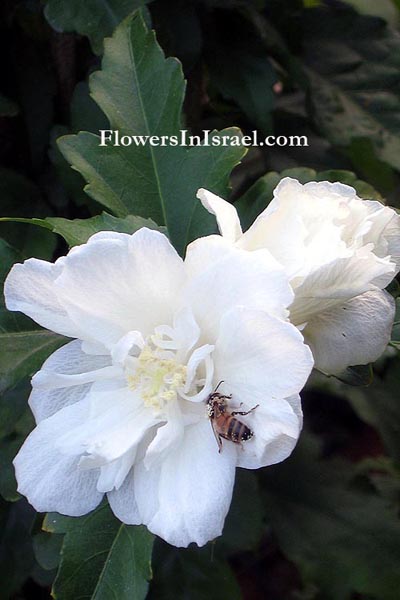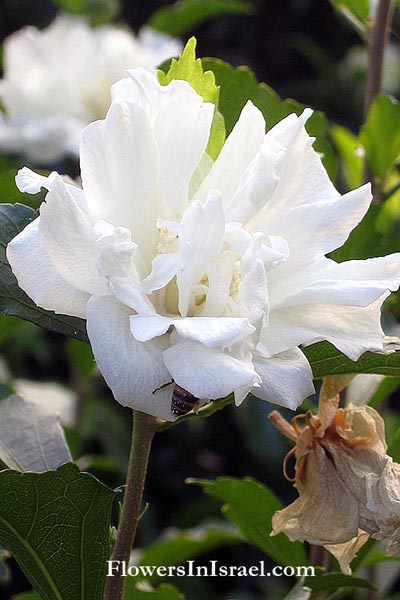היביסקוס
| Scientific name: | Hibiscus syriacus L. | |
| Scientific name: | Althaea frutex Hort. ex Mill. | |
| Common name: | Shrub Althea,Rose of Sharon, Rose-of-Sharon | |
| Hebrew name: | היביסקוס | |
| Family: | Malvaceae, חלמיתיים |

|
| Life form: | Deciduous, flowering shrub, overal vased shape | |
| Stems: | Height 200-300cm; Spread 150-200cm; multi-stemmed with lots of vertical branches; gray bark | |
| Leaves: | Alternate, simple, deciduous,3-lobed, dentate | |
| Inflorescence: | Floriferous, solitary or paired from leaf axils | |
| Flowers: | 5 petals, white, pink, violet, single or double flowers | |
| Fruits / pods: | Capsule, brown, 5-valved | |
| Origin: | China, India |

Derivation of the botanical name: Hibiscus, ancient Greek and Latin name for some mallow-like plant. syriacus, from Syria.
|